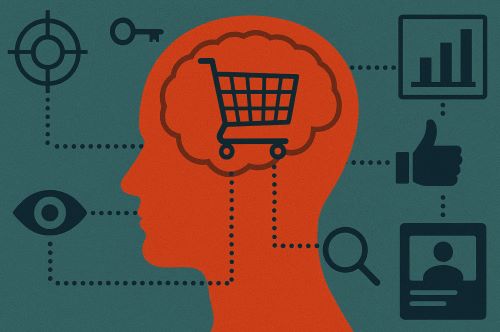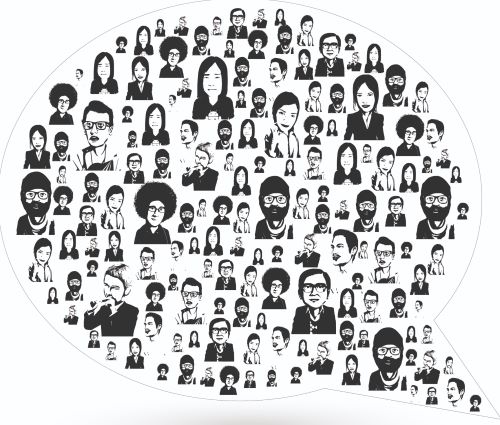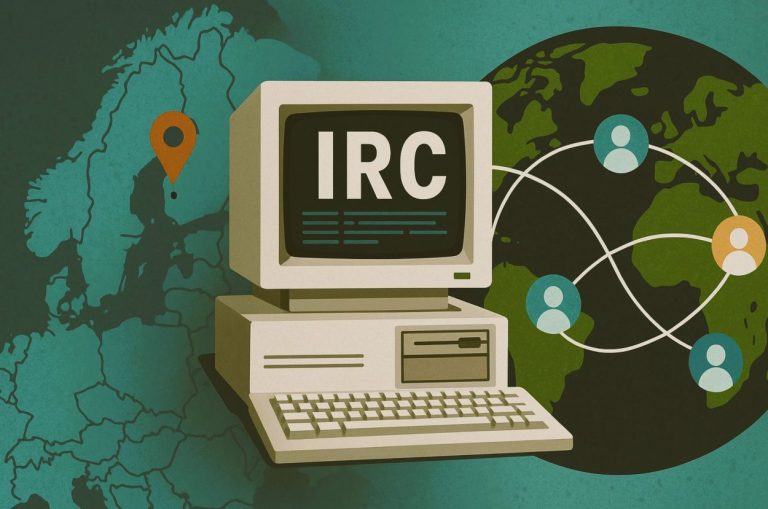

What is at stake is not simply privacy. It is the right to be unpredictable. The right to think a thought no one has anticipated. The right to act beyond the margins of a marketing plan.

By Matthew A. McIntosh
Public Historian
Brewminate
The Quiet Conversion of Human Thought into Capital
When a person scrolls through a social feed or hovers over a product listing, they are not just using technology. They are performing labor, feeding algorithms, and, perhaps most unsettlingly, participating in a market where the commodity is their own behavior. This is the conceptual core of behavioral futures markets, an evolving economic model in which future human actions are predicted, packaged, and sold to the highest bidder.
The term was coined by Harvard professor Shoshana Zuboff in her analysis of surveillance capitalism. It refers to the process by which massive quantities of personal data, often gleaned invisibly and without direct consent, are harvested to model and forecast user behavior. The goal is not merely to understand what people want but to shape what they will want and how they will act.
In this model, human experience becomes raw material. Thought, attention, movement, and desire are inputs, transformed into data flows and processed by advanced machine learning systems. What emerges is a predictive apparatus fine-tuned to identify patterns so granular that it can anticipate an individual’s decisions before they are consciously made.
From Attention to Extraction
To understand the logic of behavioral futures, one must begin with the economics of attention. In traditional advertising, companies paid for exposure—eyeballs on a screen, minutes spent watching a program. This model presumed a passive audience. What the internet introduced, especially through platforms like Google, Facebook, and Amazon, was a participatory system, one in which users actively generated the very content and data that advertisers wanted to target.
This transition was not merely technical but philosophical. Attention itself became scarce, and scarcity breeds value. Unlike oil or gold, attention cannot be stored or mined through physical means. It must be captured in real time. That is where the architecture of the digital environment began to shift, not just to accommodate human attention but to commandeer it.
Infinite scrolls, autoplay, notification systems, personalized feeds, and algorithmic recommendations are not design quirks. They are instruments of behavioral engineering. Each is built to intercept a moment of human intention, redirect it, and then log the interaction for further refinement. The system feeds on its own success. More accurate predictions generate more profitable ad placements, which then fund better models, leading to even more precision.
It is a feedback loop that refines both the system and the user. And in this loop, users are not clients. They are the product.
Surveillance Capitalism: Data Without Consent

What distinguishes behavioral futures from traditional marketing is the opaque nature of the extraction. Most users do not know the full extent of what is being collected. Beyond clicks and search queries, tech companies track cursor movements, typing speed, browsing patterns, voice inflections, and even the pauses between keystrokes. Each of these micro-behaviors becomes a signal, an indicator of mood, risk tolerance, or purchasing intent.
Such data is often bundled into psychographic profiles. These profiles are not merely demographic outlines but behavioral blueprints. They infer whether someone is likely to vote, switch insurance providers, default on a loan, or experience a depressive episode. In the most sophisticated models, these profiles are then matched against intervention strategies. What kind of message will change a behavior, what time of day it should be delivered, what emotional tone will yield the best results.
The user, in this model, is never truly alone. Their every digital gesture is situated within a statistical swarm, constantly monitored, measured, and compared to behavioral norms.
Companies argue that this enables better user experience. Ads are more relevant, recommendations more timely. But the tradeoff is rarely transparent. Consent, when it exists, is buried in legalese. And opt-outs, when they exist at all, come with functional penalties: degraded performance, denied access, or diminished personalization.
Prediction as Profit

The value of behavioral futures is realized when prediction becomes control. Consider the advertising models of Google and Meta. They do not just sell ad space. They sell outcomes: a click, a purchase, a conversion. Their clients do not care how a user got to the outcome, only that it happened. That subtle shift, from persuasion to production, reveals the deeper logic at play.
To produce an outcome is to engineer a decision. Through thousands of iterative experiments, platforms learn how to present information in ways that tilt the cognitive balance. Nudges, defaults, visual hierarchy, and temporal manipulation are not ethically neutral. They are tactical. They exist to elicit a result, often one that benefits the platform’s paying customers.
This is not necessarily malicious, but it is manipulative. Behavioral economics long ago demonstrated how easily choice can be shaped without coercion. In the hands of digital platforms with billions of users and petabytes of data, the ability to model and exploit cognitive tendencies becomes a lever of unprecedented power.
What once was the speculative terrain of psychological theory is now operationalized into code, deployed at scale, and evaluated through A/B testing. The platform does not guess. It observes, it adapts, it selects the variant that yields the highest engagement or revenue.
In such a system, the human mind becomes a terrain to be mapped, navigated, and ultimately, governed.
The Cultural Cost of Predictive Optimization
There is an insidious consequence to this paradigm. When behavior is modeled for prediction, and prediction is monetized, spontaneity becomes noise. Anomalous behavior, unpredictable choices, or moments of self-reflection resist profitable modeling. And so the system subtly incentivizes conformity, not explicitly, but through design, repetition, and availability.
This raises a deeper question: what happens to agency when platforms anticipate and nudge our every move? The answer is not straightforward. Humans still make choices, but those choices are increasingly framed within environments engineered for profit. The boundary between autonomy and automation becomes porous.
Moreover, when predictive accuracy becomes a competitive advantage, the pressure to collect more data grows. What we see in practice is a race toward ever-more invasive forms of surveillance, justified by marginal improvements in targeting efficiency. Devices that once served users now serve as proxies for their intentions.
Voice assistants, wearables, smart TVs, and even connected cars are not simply tools. They are sensors. Their presence in everyday life is framed as convenience, but their function is data extraction. And their goal is not just to serve needs but to anticipate and preempt them, often in ways that reinforce consumption, dependency, or platform loyalty.
Rethinking the Terms of Engagement
Criticism of behavioral futures is not a call for nostalgia. The genie of data has long since left the bottle. But what remains contested is the structure of accountability. If platforms profit from prediction, they must also reckon with the ethical consequences of shaping behavior.
Some advocate for stronger regulation, requiring transparency in data collection and algorithmic decision-making. Others call for a shift in business models away from surveillance-based advertising and toward subscription or cooperative ownership. These ideas remain nascent, often drowned out by the momentum of quarterly earnings and venture capital logic.
Still, there are glimmers of resistance. Users increasingly adopt ad blockers, encryption tools, and alternative platforms. Whistleblowers, researchers, and journalists continue to expose the mechanics of manipulation. And in some jurisdictions, particularly within the European Union, legal frameworks like the General Data Protection Regulation (GDPR) have begun to assert data rights as civil rights.
Yet even as legal battles unfold, the deeper cultural struggle remains: how to preserve human agency in a world that profits from its erosion. Behavioral futures are not inevitable. They are constructed. And like all systems of power, they can be challenged, reimagined, and, if necessary, dismantled.
What is at stake is not simply privacy. It is the right to be unpredictable. The right to think a thought no one has anticipated. The right to act beyond the margins of a marketing plan. In a world increasingly built to forecast us, the most radical thing we can do may be to surprise it.
Originally published by Brewminate, 07.16.2025, under the terms of a Creative Commons Attribution-NonCommercial-NoDerivatives 4.0 International license.


